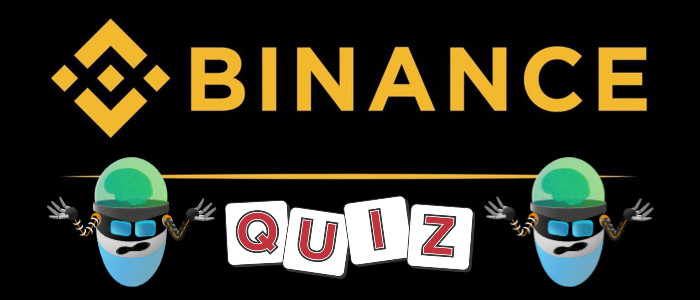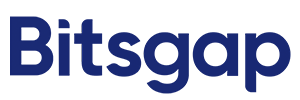
When looking to trade cryptocurrency for profit, you might stumble upon multiple opportunities to attain your goals. From cryptocurrency trading bots to niche trading options, you can take your pick through various choices.
In recent years, futures trading has emerged as one of the most popular ways to benefit from cryptocurrency. Simply put, these instruments or derivatives let you profit from choice cryptocurrencies without physically holding the digital asset in your wallet. Instead of buying and selling cryptocurrency on the market, these futures contracts let you speculate on the asset’s future price.
Due to this reason, you can now easily trade futures contracts on a reputable exchange such as Binance. But before you can move forward with trading futures contracts on Binance, you have to complete a responsible trading quiz to determine if you understand the risks and exposure of dealing in futures. This ensures that you are not only aware of the possible repercussions of this trading practice, but also have the capability of making informed decisions during its execution.
To help you learn more about the Binance futures quiz, here’s a lowdown on its execution as well as the questions and answers in this Binance futures quiz.
📈 What Are the Advantages of Binance Futures Trading?
Binance futures trading brings several advantages to the table, which include but are not limited to reduced trading costs, simpler trading methods, and more control over risk exposure. Due to these benefits, futures trading through Binance is now easily accessible through a few simple steps.
But as explained above, you need to pass a quiz before you can start with trading futures contracts on the renowned platform. Known as the Binance Futures Responsible Trading initiative, this quiz asks you a few choice questions to determine if you are ready to delve into futures contracts trading.
TOP TRADING BOTS
🔎 What Are the Latest Binance Futures Quiz Answers?
The latest Binance Futures Quiz answers are outlined below. By going through this information, you can make sure to ace the test and be ready for futures trading.
Each of the questions follows three options. The correct answer is highlighted in bold.
1. What is the maximum leverage available on Binance Futures?
- 125x
- 100x
- 75x
While you can select this value for leverage, it is advised that you not go as high on leverage since it can take a massive hit on your finances. This point is highly important. In fact, its crucial nature can be understood by the measures that Binance takes to protect its customers from high leverage.
For instance, even when you pass the quiz, Binance puts a limit on new futures contract traders that does not let them select leverage levels of over 20x. This limit is lifted only after the 60 days of account opening, which lets futures traders understand the market a little better.
2. Which wallet is not supported for trading on Binance Futures?
- USDT-margined wallet
- Coin-margined wallet
- Margin wallet
This one is quite simple to understand. Margin wallet is available for margin trading, not futures trading.
For futures trading, you can select from the other two options without any problems. The first one is the USDT-margined wallet, which allows you to trade using stablecoin-based contracts. The other one is the coin-margined wallet, which deals in non-stablecoin-based contracts.
This information is quite basic, but learning it helps you understand all your available options. This allows you to make trading decisions in a smarter and more informed manner.
3. Which of these is not the key difference between USDT-margined futures and coin-margined futures?
- Types of collateral
- Size unit
- Leverage level
As suggested by their name, the type of collateral between USDT-margined futures and coin-margined futures is different. The former uses stablecoins, while the latter utilizes non-stablecoins. The size unit used is also different.
This leaves the leverage level as the only non-difference in both USDT-margined futures and coin-margined futures. Both of them have the maximum leverage levels of 125x after the initial 60-day limit is lifted on new accounts. By remembering this information, you can easily discern between both types of trading.
4. What can the maximum loss for trading in a futures contract be?
- 100% of collateral
- 30% of collateral
- 2.5% of collateral
Futures trading is a highly risky affair that can cause you to lose all of your investment or collateral. That is why, it is important that you only invest money that you can afford to lose. This approach should also stand tall even when you have an impeccable grasp over futures trading.
Keeping this possibility in mind ensures that you are staying away from investing any funds that are critical for covering your foundational expenses.
5. Which of these is not the key difference between perpetual futures and quarterly futures?
- Funding fee
- Trading method
- Delivery date
Both perpetual and quarterly future contracts have a distinct difference in their funding fee.
As suggested by their names, the frequency or specification of their delivery date is also different. These factors apply regardless of the asset that you are using for your futures contract.
This leaves the trading method as the only non-difference between perpetual futures and quarterly futures. This information also helps you make informed decisions regarding the trading method that you end up choosing.
6. If a user has open orders or position, which of the following can be done by the user?
- Switch to one-way mode or hedge mode
- Switch to cross margin mode or isolated margin mode
- Borrow by using cross collateral function
You cannot switch modes while having open orders or positions. But you can borrow by using the cross-collateral function. With that being said, you should only advance with the practice once you have considered all associated risks.
7. What is the reference price Binance Futures uses to determine if a position should be liquidated?
- Average price in the past one hour
- Last price
- Mark price
The average price in the past one hour or the last price does not clarify the futures contract’s viability to the market. That is why the mark price stands out as the deciding factor to determine the liquidation of a contract.
8. When will a user receive margin calls? When his/her margin balance is lower than:
- Weighted margin
- Bankruptcy margin
- Maintenance margin
You can receive a margin call when your margin balance is lower than the outlined maintenance margin. This term is pretty self-explanatory, but being reminded of it not only lets you remember it, but also allows you to be mindful of the associated action.
It is important because whenever you receive a margin call, you either need to add collateral or reduce your positions. Otherwise, your positions could be sold at a loss.
9. Can BNB (Binance Coin) in users’ USDT-margined wallets be used as margins to open new positions?
- Yes
- No, BNB in users’ USDT-margined wallets can only be used to pay commissions.
This is also a self-explanatory answer. Making a point to remember this information lets you determine how many opportunities you have available for different trading decisions.
10. Can unrealized PNL (profit and loss) be used as margins to open new positions?
- Yes
- No
Once again, this simple yet important information can help you make timely and intelligent trading decisions that help you get the most out of your futures trading efforts.
11. Which one of the following actions is not recommended during drastic price movements?
- Use Mark Price as the trigger price for Stop Limit orders
- Lower the leverage to avoid being liquidated
- Use market order to get in or get out
When you are facing drastic price movements, you should not use market order as a mitigation strategy. It is because market order value can fluctuate rapidly and lead you towards the possibility of losses. That is why it’s better to use an approach such as limit order.
12. Should you take up a personal loan to trade futures?
- Yes, I believe I can profit from it.
- No, I should trade within my financial means.
As explained above, futures trading is risky. You shouldn’t take a loan to enact any of your trading plans. Instead, you should only trade with the finances that you already have and which you can afford to lose.
📊 What Is the Binance Futures Responsible Trading Program?
In order to protect their customers while also covering their bases for claims of negligence, some financial institutions establish specific requirements before you can access certain products under their banner.
Some institutions need you to have a minimum net liquidation value (NLV) for conventional futures trading. For instance, when you are trading futures contracts through an individual retirement account (IRA), you might be required to have an NLV of $20,000. Similarly, some institutions may require you to go through the training material and confirm that you have read through it before you can trade futures contracts.
Binance takes the latter approach and lays down the Binance Futures Responsible Trading initiative to make sure that all traders are aware of what they are signing up for through the program. That is why, if you are planning to open a futures account with Binance, it is mandatory to go through its Binance Futures Responsible Trading initiative.
The program is easy and simply requires you to go through the Binance Responsible Trading best practices. This information for Binance futures trading is available on the exchange’s informational website and acts as a quick introduction of what futures contracts may entail and whether you are suitable for the mechanisms that it brings to the table.
This covers the following aspects.
Gauging your compatibility with futures trading. Futures trading uses speculative values to transact certain securities at a future date. But this particular transaction is tied to properly assessing the value of the asset in question. Since the practice requires a more intricate understanding of the market than simply buying and selling cryptocurrency, the Responsible Trading material lets you assess the requirements in a thorough manner. This allows you to determine whether the approach is suitable for you.
Learning about new opportunities. Sometimes, you may not be ready for futures trading from a financial or educational standpoint. But it doesn’t mean that you may always remain stuck at the same level of limitations. By learning about what kind of information you need to learn or what level of wealth you need to accumulate before futures trading, you can take certain steps to make use of these new opportunities to the hilt.
Knowing how to safeguard your finances. Whenever you are exploring trading opportunities of any kind, it is important that you learn all the risks involved in it. Studying the Responsible Trading material lets you know exactly what types of measures you need to take in order to protect your investment. This prepares you for crucial steps that come after investing in a futures contract. In turn, you are able to make smart decisions that minimize your risk.
Deciding when to take a step back. Starting on futures trading does not mean that you always have to continue treading along that path. There might be times when you need to take a step back or liquidate your investment to prevent massive losses. This ensures that you are able to chase your goals of financial growth while knowing when to halt your efforts and start all over again. The Responsible Trading material lets you know how to identify these indicators.
With this information in mind, it becomes easier for you to understand why the Binance Futures Responsible Trading material and its associated quiz are important for you. As a result, you can go through the presented questions while knowing the value behind them.
🦾 Can You Use Automated Bots With Binance Futures Trading?
In order to bring more ease to your futures contract trading, you can use automated trading bots with your Binance account. These bots work on a similar mechanism as regular cryptocurrency trading bots. However, they go a step further and also help you manage your futures contracts trading without constant manual management.
One of the most popular Binance futures trading bots is Bitsgap.
The trading bots also bring a host of advantages to the table. With that being said, they also have some shortcomings that you should keep in mind.
To help you get a quick overview of these factors, here’s a list of the pros and cons of using futures trading bots with Binance.
Pros
- Precise control over your trading.
- Quick actions in the face of market movements.
- Relief from performing consistent manual checks.
- Backtesting lets you check your strategies with market data.
- Prevention of human error and emotional fallacies during trading.
Cons
- Adjustment to a learning curve.
- Additional investment in bot software.
- Time investment for one-time setup.
- Maintenance requirements for weekly checks.
By keeping these capabilities in mind, you can determine whether or not to use a trading bot with your futures contracts. With that being said, using a bot does provide you with an edge over purely manual trading practices.
Whatever approach you end up choosing, it is highly important that you keep safe trading practices in mind. This ensures that you are able to make the most out of your futures trading endeavors while steering clear of any surprises.


